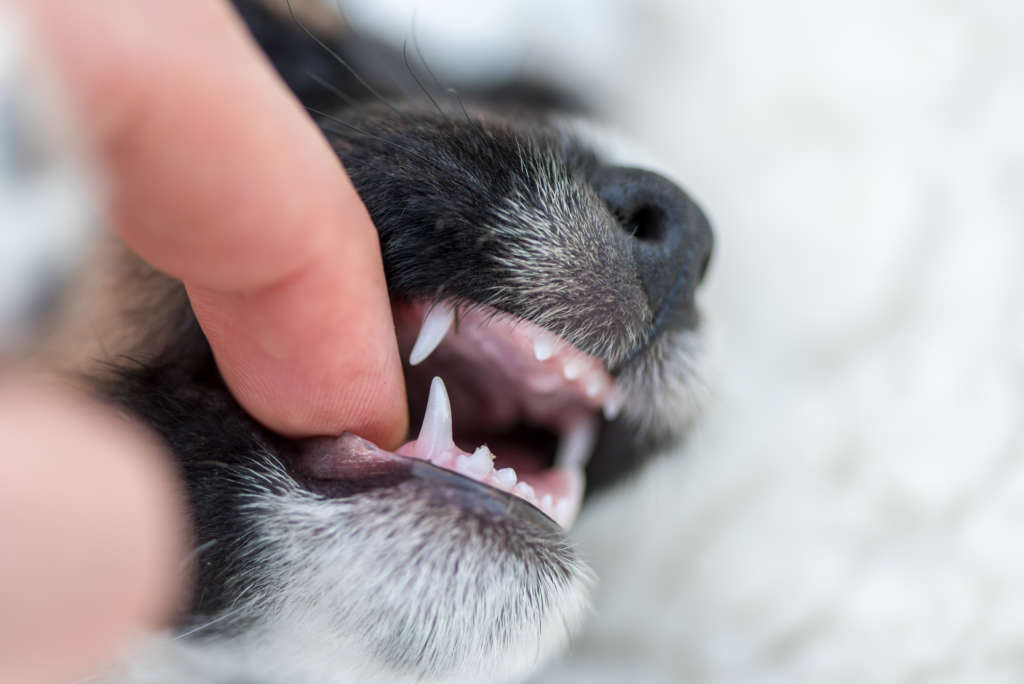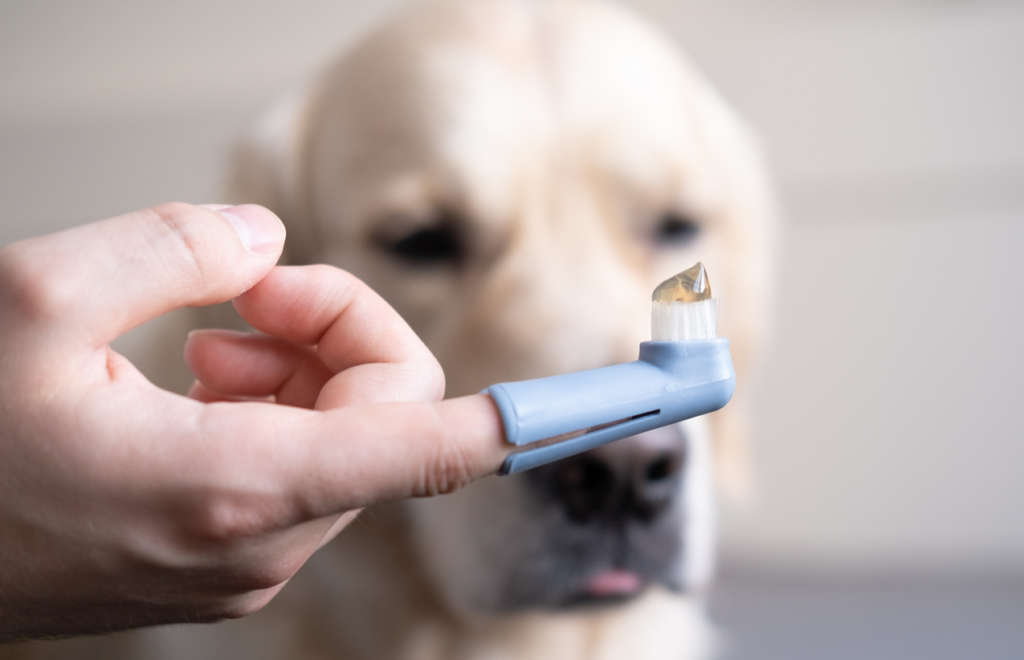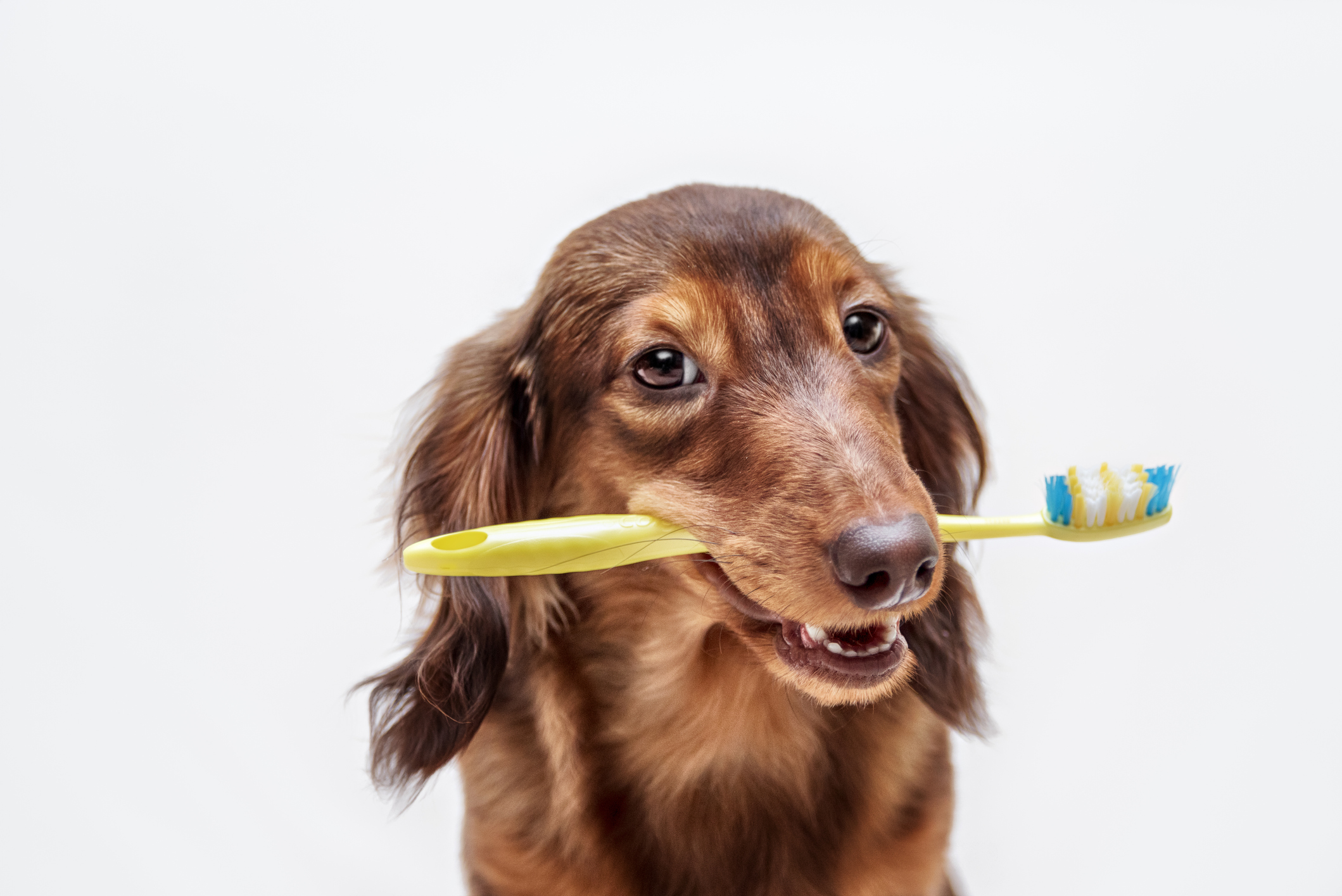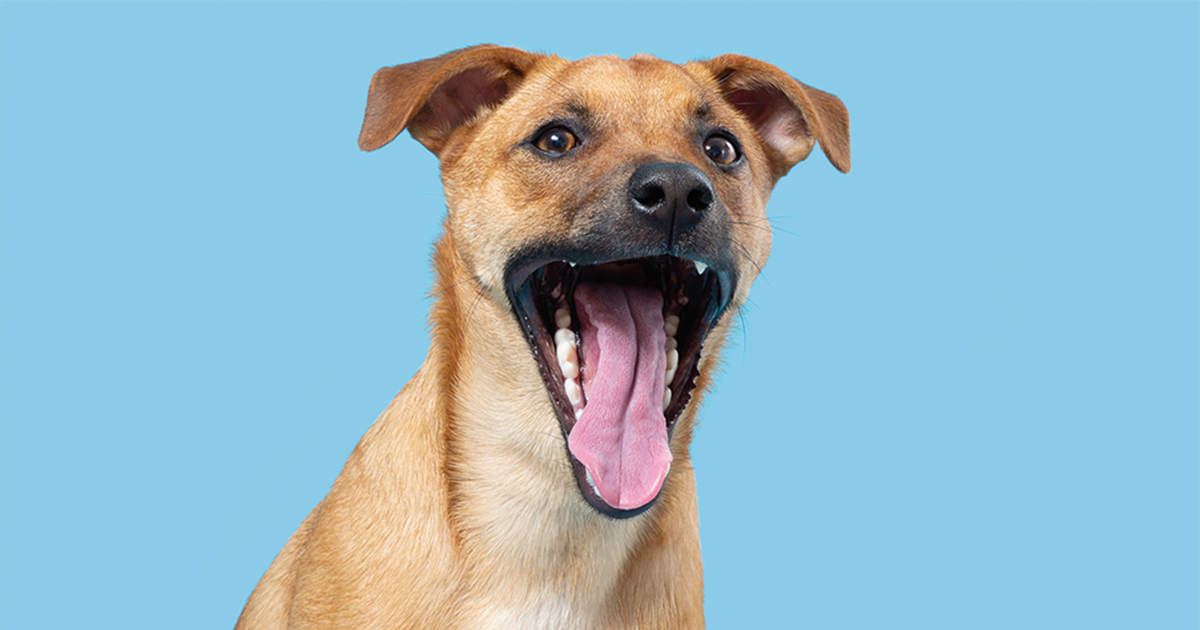We get it—it’s hard enough to remember to brush your own teeth (or worse, floss), much less your puppy’s teeth. Your mind is on other things like potty training, playing with toys, and deciding what their Instagram should be called.
And why bother brushing a puppy’s teeth when they’re going to fall out anyway? The thing is, just like we’re taught to brush when we still have our baby teeth, the same goes for puppies.
Why Should You Brush Your Puppy’s Teeth?
Brushing your dog’s teeth regularly promotes positive dental health habits and helps stave off funky breath and periodontal (dental) disease, which plagues 80% of dogs over 3 years old. Yet only 2% of dog parents actually engage in proper dental care for their best friends. Why?
Well, it can be a tricky process. Adult dogs who are unfamiliar with having a toothbrush in their mouth probably won’t be thrilled about it. Plus, just like humans, brushing for dogs is a daily ordeal. When you start the process in puppyhood, you’re helping your dog understand that the toothbrush is not the enemy (and chicken-flavored toothpaste is actually not that bad at all).


Set A Routine
Puppies like predictability. It helps them establish a sense of trust with you. Choose a specific time of day, like in the evening after dinner, when you can sit down and have brush time. Create a soothing, calm environment, and always be patient with plenty of treats at hand so your puppy forms positive associations with the process.
Use A Toothbrush Designed For Dogs
As tempting as it is to use the spare brush that’s been sitting in your drawer for years, you’ll want to equip yourself with a toothbrush designed specifically for dogs. Double-ended toothbrushes with smaller heads and softer bristles, or finger brushes with rubber nubs instead of bristles are both preferable over the typical human toothbrush, which can be a bit bulky to maneuver.
The internet is stocked with dog toothbrushes that can get you started on the road to clean teeth and fresh breath.


Only Use Dog-Friendly Toothpaste
Dogs can’t use toothpaste made for humans, don’t even try! Human toothpastes contain ingredients that can make dogs sick, especially xylitol, an artificial sweetener that can be deadly even in small amounts.
Find an enzymatic toothpaste tailored to fight plaque buildup, discourage bacterial growth, and support gum health. For a triple-enzymatic option, check out BARK Bright.
How To Brush Your Puppy’s Teeth The Right Way
Find a position that’s comfortable for both you and your dog. First, use your fingers to gauge their resistance. Slide your fingers along their teeth and up along the gum line. Try this until your puppy is relaxed and secure with your finger-toothbrush in their mouth. This, and treats doled out along the way, will help them acclimate to the real thing.
Top teeth first. With your toothbrush, start slow and progressively rev up the gusto as you suss out their mood. When you finish a small area, give your puppy treats, and lots of ’em! Positive reinforcement will make brushing so much easier in the long run.
Bottom teeth next: Gently move their lip down with one hand and brush with the other. Begin on the outside, then move to the inner side of the teeth. Use a circular motion like you would brushing your own teeth, paying special attention to the gumline where plaque gets pesky.
Plaque is the debris buildup that turns to tartar (a much harder substance) and eventually leads to dental disease and other health issues. Continue to brush small areas at a time and give treats generously!
Note: The inside of a dog’s teeth are a bit tricker to brush, so you might need a few attempts before you execute a flawless brushing session. But with patience, positivity, and rewards, you’ll have the routine nailed down in no time.
Related Article: Is BARK Bright Worth It? How It Works, Dog Dental Care Basics, And Important Terms To Know


Assess As You Go
You probably won’t knock this out of the park the first go-round with your new puppy. Make sure to watch out for any signs of tooth sensitivity, tooth pain, or body language that indicates something is uncomfortable, like wincing or flinching. This might be a sign that you should visit the veterinarian and have their mouth thoroughly checked out.
If you notice:
- Red, irritated gums
- Bleeding
- Difficulty chewing food, toys, or treats
- Yelping when you brush
Then it’s definitely time to consult a professional. Regular, structured dental care for your dog can prevent concerning symptoms from developing in the first place, so stay vigilant and stay playful. Brushing should always be fun and rewarding.
Still Having A Tough Time With The Toothbrush?
Sometimes brushing a dog’s teeth seems like an impossible task. After all, they don’t know you’re just trying to keep them healthy! The BARK Bright dental kit is a toothbrush-less daily dental system that includes a 1-month supply of dental chews and triple-enzymatic toothpaste.
How it works:
- Squeeze the toothpaste along the chew’s specially-designed groove.
- Give to your dog (they’ll think it’s a treat!).
- As they chew, the chew itself helps scrub away debris, while the toothpaste helps break down plaque and bad breath-causing bacteria even after they’re finished.
Helpful tip: If your dog prefers to scarf down the chew, try holding one end and letting them gradually chew the other, switching to the other side of the mouth halfway through.
No matter your dog’s age, proper dental care is an important key to overall health and wellness. And like all good habits, it starts when they’re young!







